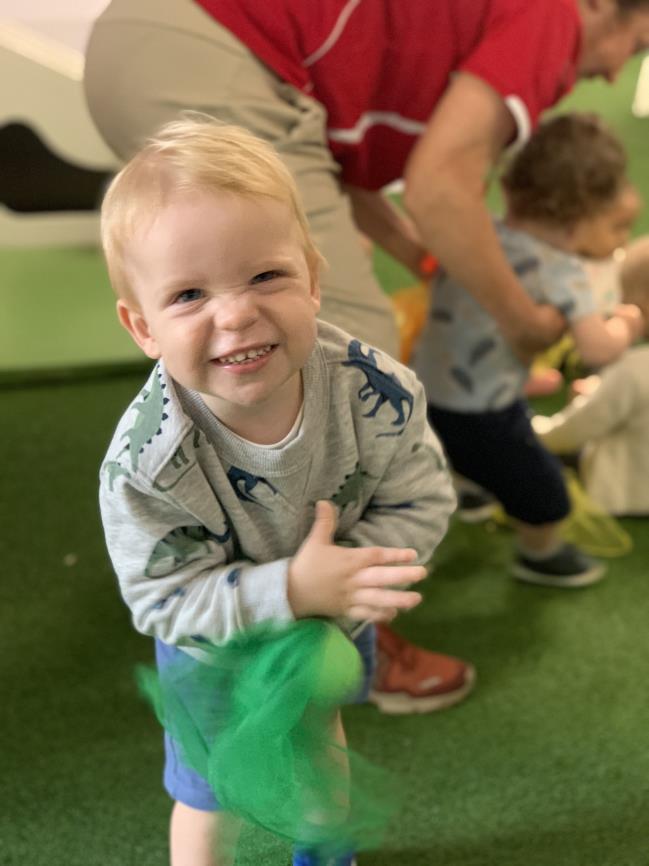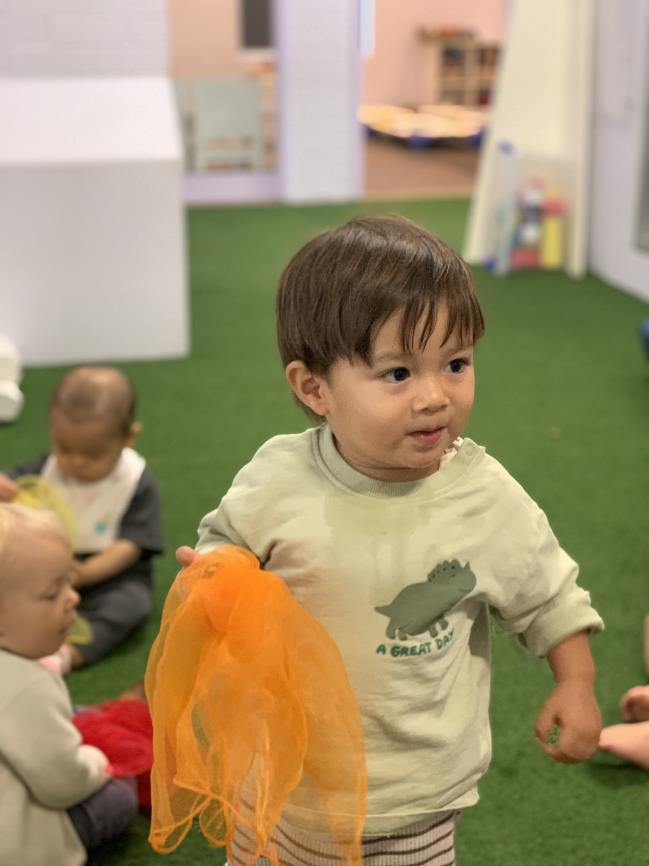Reddam ELS Woollahra
31

Dear Parents and Caregivers,
There are many highlights in a normal day here in the ELS. Whether the children are creating beautiful artworks, or playing happily, or singing, or listening to a fascinating story, or expressing themselves in drama, or learning new sports skills – there is always something to be excited about, as is so evident in the enthusiasm and animated expressions on the children’s faces.
One space in which this is particularly so is during their sports lessons, in which they are introduced to basic, formative sports skills. Their gross motor skills are challenged and built upon, and the foundations are laid for later years of sports participation, which we trust will bring great enjoyment.

Introducing sports skills to young children in an early learning environment is essential for their physical, cognitive, and social development. It helps them to develop fundamental motor skills, improve their fitness levels, and foster positive social interactions.
Sports activities involve movement, which is critical for young children's physical development. By engaging in sports activities, children develop fundamental motor skills such as running, jumping,
throwing, and catching. These skills are essential for their overall physical development and can improve their balance, coordination, and agility. It is fascinating each week to read in the newsletter of the variety of activities introduced during the sports lessons – all of which sound like great fun, and which involve a vast array of skills!
Engaging in sports activities can also help young children to develop their cognitive skills. Sports activities require children to use their problem-solving skills, decision-making skills, and spatial awareness. By engaging in sports activities, young children can improve their concentration, memory, and attention span.
Of course, sports activities also provide an excellent opportunity for young children to socialise and interact with their peers. By participating in team sports, children learn how to cooperate with others, communicate effectively, and develop empathy towards others. Sports activities also provide a safe environment for children to learn how to deal with success and failure, which is essential for their emotional development.
We trust that as the children in the ELS enjoy their sports lessons each week they are growing in selfesteem and confidence, and laying the foundations for many years of pleasure and social interactions with their friends and family.
Have a happy weekend!
Dee Pitcairn PrincipalHappy Birthday
Reddam House ELS would like to wish a very Happy Birthday to
 1 - Sophie McCabe
1 - Sophie McCabe
 2 - Sergio Argyrou
2 - Sergio Argyrou
Pom poms in ice cubes. These are so beautiful, and so much fun too. We popped the ice cubes into one side of the sensory tray and the other side had coloured bowls and spoons.

Handling them proved tricky as they were quite slippery as they began to melt. Some kids found it much easier to use their hands than the spoon to transfer the ice cubes.
These are also perfect to cool down on these hot autumn days. We did end up with some pom pom soup by the end of this activity. Once the pom poms dried they are as good as new, so maybe we will do this again in the future as the children were HUGE fans.
Sensory play is a great way to engage children in lots of small conversations, which supports their efforts to develop their vocabulary.
During the day, the children are offered many sensory experiences, from exploring kinetic sand, water play, outdoors, smelling and tasting. We also look for opportunities to mould and build with play dough and to use our eyes to see everything our world has to offer. Children's senses are always in use. It is an important part of early childhood to provide children with these opportunities to use their senses as they explore their world from birth. Sensory play is crucial to brain development, and this learning comes naturally to children. These are skills they come to rely on when it comes to understanding objects, spaces and people.
As adults, our senses provide us with vital information that we use to inform decision making thousands of times a day. Sensory activities, as well as being fun and interesting for young children, encourage them to explore and investigate.

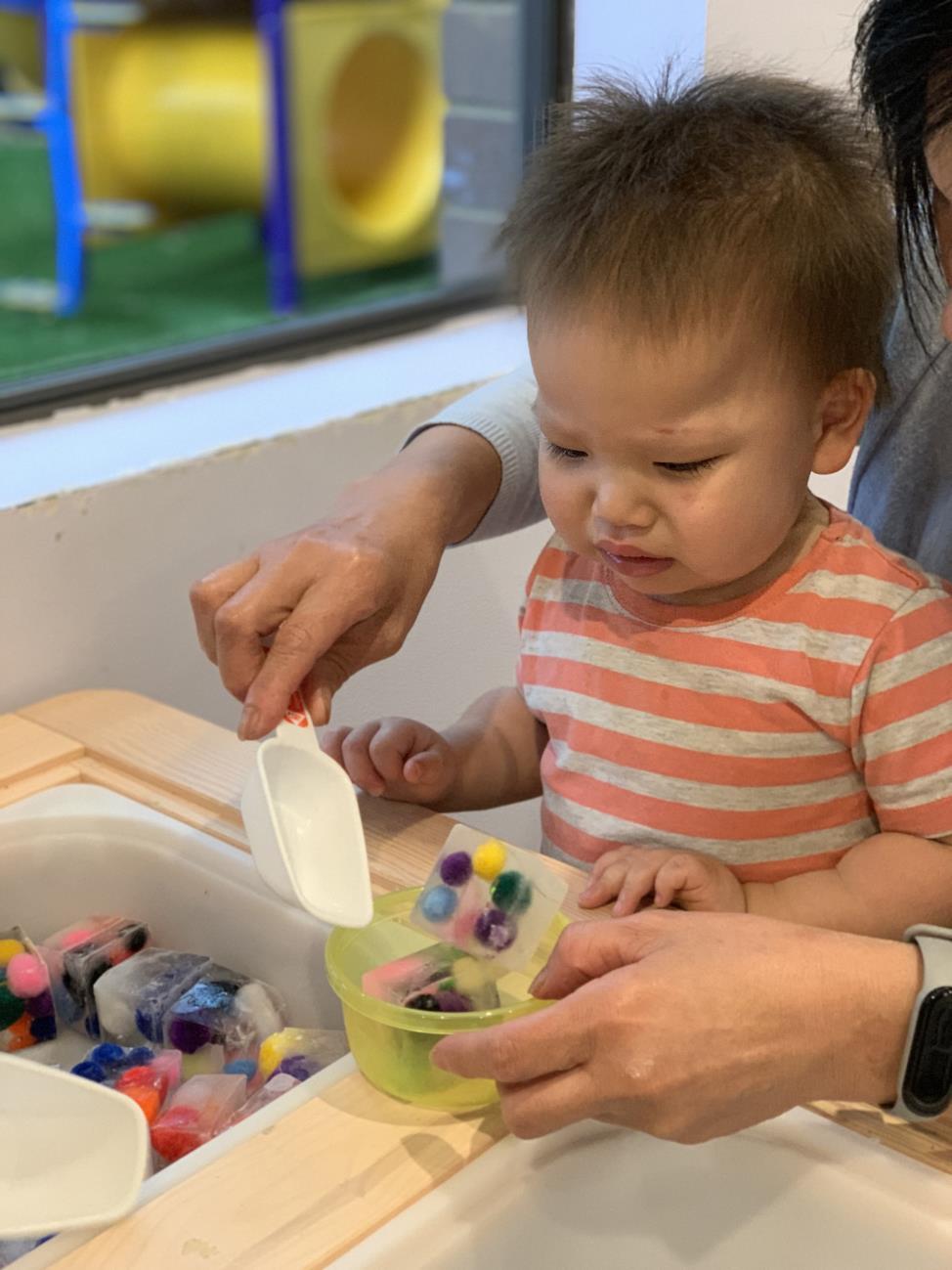




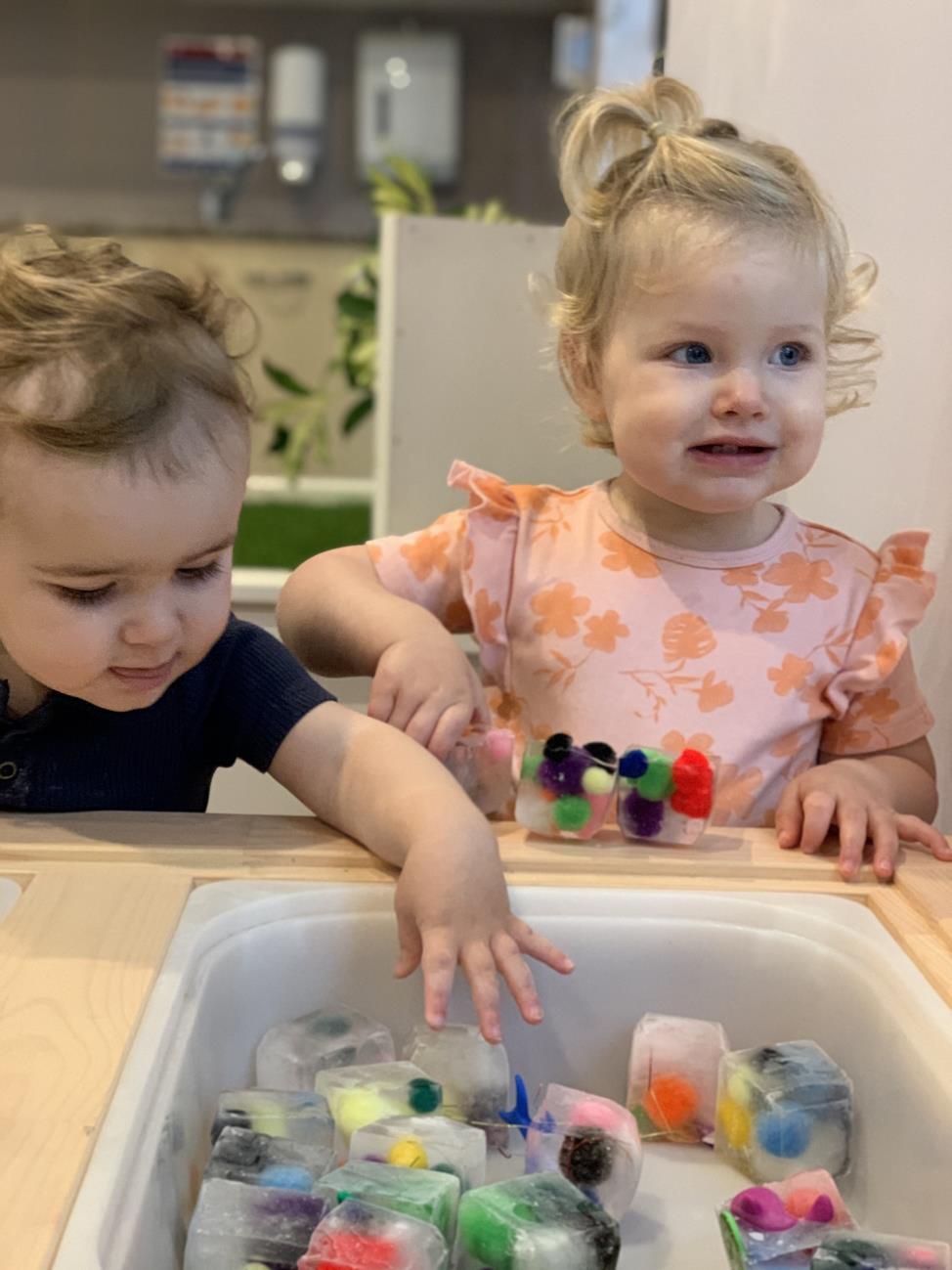








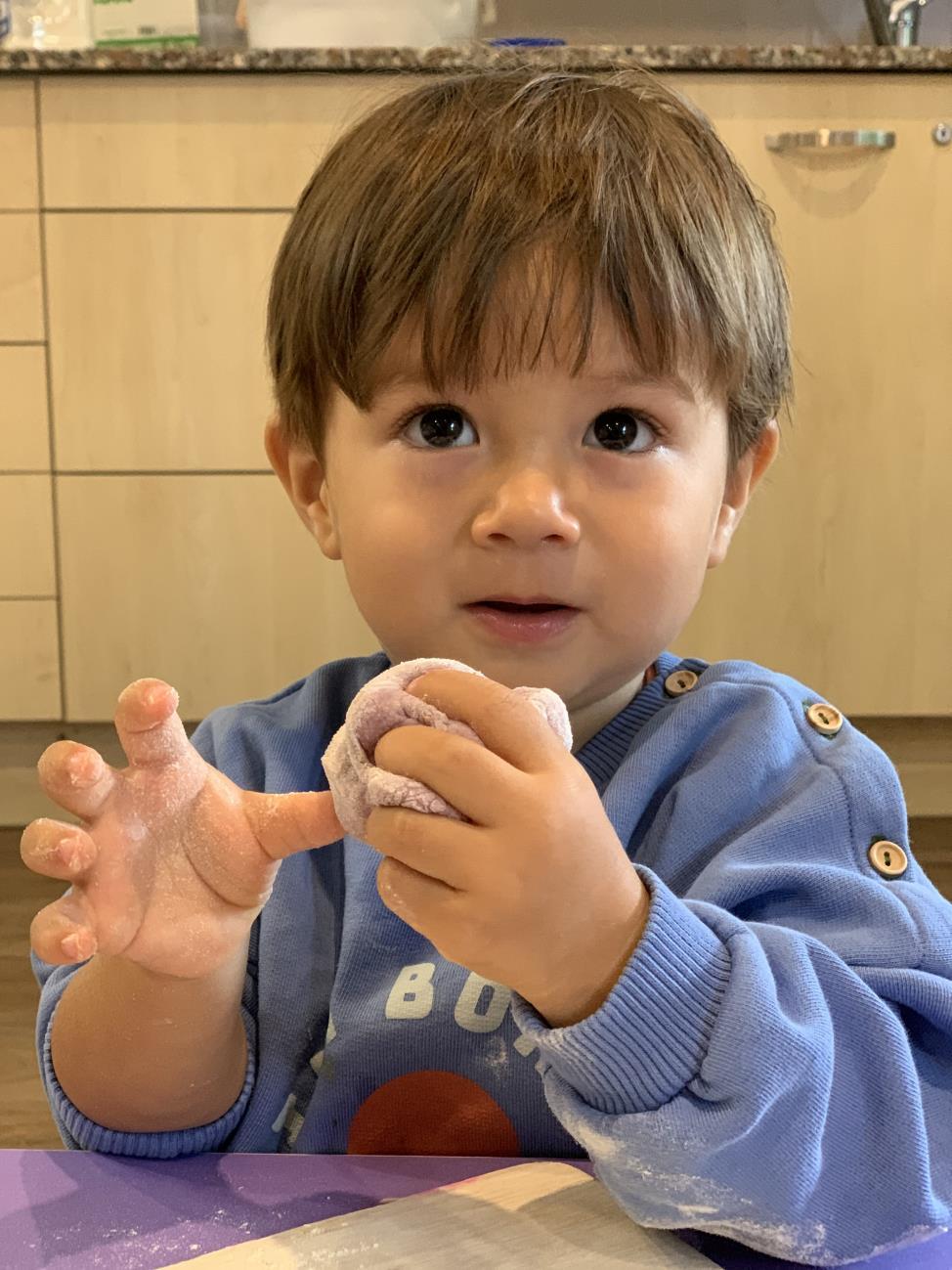







This week we continued to extend the children’s interest in animals, but this time we focused on farm animals. One of the first nursery rhymes the children displayed interest in this year was learning how to sing a few words from “Old McDonald”, as they excitedly go “Ee i ee i o”
This week, the children learned more about pigs. We set up a sensory tray in the classroom, with soil (mud) and lots of pig toys. Through engaging in this sensory experience, the children also improved their vocabulary as they learned new words, for example, mud, pig, tail, belly, and their favourite, which was making the pig noise loudly, “Oink”! The Fledglings stood around the sensory table and were encouraged to give the pigs belly rubs, as this was a fun fact we learned about them. We also learned that pigs like eating corn and soybeans.
In the Mini Atelier, the children used the pig toys to create visual arts. We asked the children to take the pigs for a walk in the mud, as they stomped the toys on the table.

At group time, the children enjoyed reading the book “I Spy on the Farm”, by Edward Gibbs. In this interactive book, the children tried to guess what animals were hidden in the following page, by listening to their noises and seeing their colours. In the end, everyone had a turn at spying through the hole on the page.
Farm animals are one of the children’s favourite kind of animals, as most of them have already seen at least some of these animals in their natural habitat. We are looking forward to creating a collaborative panel of children’s personal photos with animals, as we receive the photos by email.
The Early Years Learning Framework V2.0, 2022
Learning Outcome 1: Children have a strong sense of identity. 1.2 Children develop their emerging autonomy, inter-dependence, resilience and agency.
Learning Outcome 2: Children are connected with and contribute to their world. 2.4 Children become socially responsible and show respect for the environment.
Learning Outcome 4: Children are confident and involved learners. 4.3 Children transfer and adapt what they have learned from one context to another.
Learning Outcome 5: Children are effective communicators. 5.1 Children interact verbally and nonverbally with others for a range of purposes. 5.2 Children engage with a range of texts and gain meaning from these texts.
Creative Art is the process, not the product
According to Mary Ann F.Kohl, author of Primary Art: “As kids manipulate a paintbrush, their fine motor skills improve. By counting pieces and colours, they learn the basics of math. When children experiment with materials, they dabble in science. Most important perhaps, when kids feel good while they are creating, art helps boost self-confidence. And children who feel able to experiment and to make mistakes feel free to invent new ways of thinking, which extends well beyond the craft room.”
At Stage 2, there are a range of activities and experiences to support our children’s creativity – from building to drawing, from scribbles to shapes, from glue sticks to glitters, from blue to red, from the ice cube painting to collage. Children are naturally curious. From the minute they gain control of their limbs, they work to put themselves out into the world to see how it all works. They explore, observe and imitate, trying to figure out how things operate and how to control themselves and their environments. This unrestricted exploration helps children form connections in their brain, which helps them learn during life.
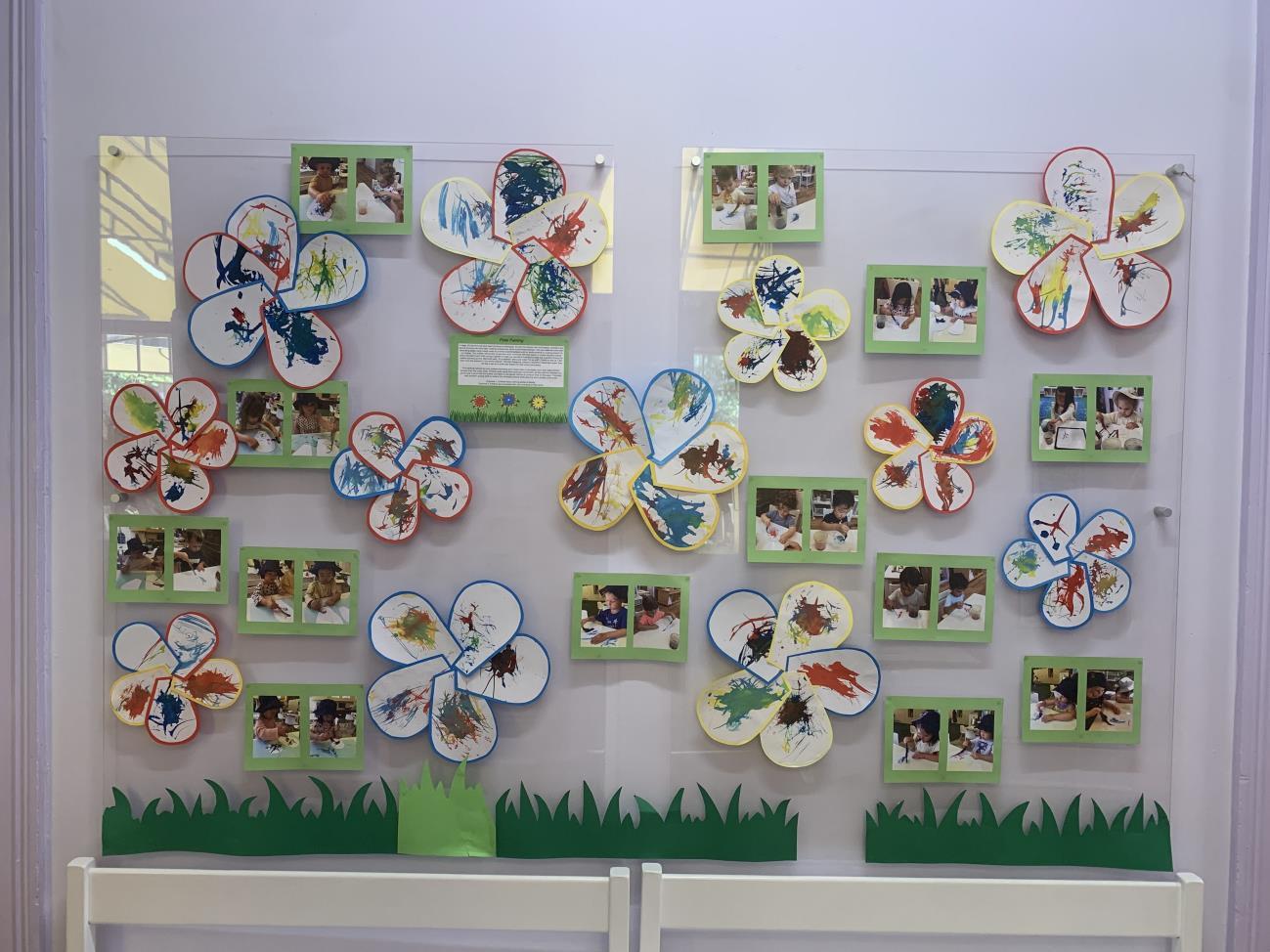
This week, our children were really keen to pick up the pencil and crayon to express their creative thinking. We saw lots “scribbles” on the page, and we know they are more than a “scribble”. During this stage, children are experimenting with making marks on paper and exploring the different textures and colours of drawing materials. Their drawings may consist of random lines and shapes, often done with great enthusiasm and energy. What really amazed us is the meaning behind their work, as our children were able to confidently explain their creation. It is important to remember that every child develops at their own pace and will progress at different rates. Encouraging a child's creativity and providing them with a variety of drawing materials can help to foster their artistic development.
Over the week, we also encouraged our children to participate in collage, playdough, and easel painting. These activities at our Atelier are also able to enhance our children’s fine motor skills and build the muscle strength of their hands. Art is a natural activity to support free play in children. The freedom to manipulate different materials in an organic and unstructured way allows for exploration and experimentation. These artistic endeavours and self-directed explorations are fun, and children are learning while having fun.










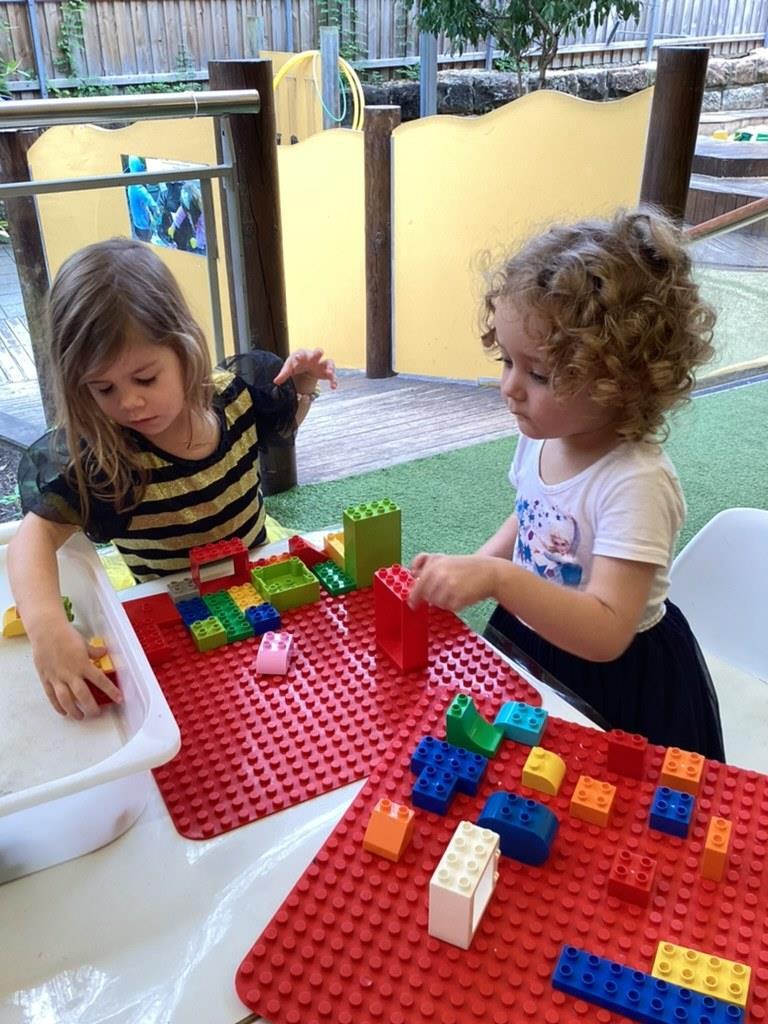
During this term the children have shown a keen interest in conducting science experiments and on a weekly basis have consistently requested to take part in them. As we have responded to their interest, we have provided opportunities for them to take part in a volcanic eruption, skittle colouring and dancing sultanas. This week they were invited to partake in an experiment which explored colour mixing and the importance of using soap when washing hands. The children were invited to come one at a time and partake in a colour mixing experience which consisted of milk, food colouring, food colouring and dish washing liquid. The first step was to pour the milk into a shallow bowl. They required assistance as the milk container was heavy and challenging to hold. Next, using a dropper, they selected an array of food colouring and transferred them to the bowl. The final stage of the experiment was to submerge the tip of a cotton bud into the dishwashing liquid and then place it in the centre of food colouring. They were asked to predict what would happen and describe what they could see happening during this experiment.

Isabelle: “It’s a rainbow.”
Theodore: “It’s turning into a rainbow.”
Callum: “I’m excited. Yellow and blue make green.”
Asher: “Mix it. It’s a swirling snake.”
Harriet: “It will go green. Look at it moving around.”
The next experiment highlighted how significant the use of hand soap is in removing germs from our bodies instead of using just water. On the table there was an array of ingredients including water, food, colouring, pepper and hand soap. Before starting the experiment, we discussed what you do when you have been to the bathroom or when you’re about to eat food. The children immediately responded, “Washing our hands” and this led to a discussion of why we wash our hands what’s on our hands that we can’t see or smell instantly. They responded “germs” and Fiona explained that this experiment would be like washing their hands.
The first stage of the experiment was to pour water into a shallow bowl, which required focus and concentration as they tipped the water jug and maintained control. Next, they were asked to select a colour of their choice to add to the water and watched as it spread around the water. Then Fiona informed them that we would be using the pepper and pretending it was the germs on our hands or body. They twisted the bottom of the jar to release the peppercorn. Then Fiona queried, what would happen if you put your finger in the water with the germs with no soap and they watched it do nothing. Retrieving the hand soap, a small amount was squeezed onto the tip of their finger, and they watched with anticipation as the pepper quickly spread to the side of the dish as it reacted to the soap. The children provided an array of responses.
Isabella: “Don’t know.”
Mila: “Went to the side.”
Theodore: “Looks like strawberry” and “It doesn’t go back to the sides but with soap it does.” (Referring to not having soap on his fingertip)
Rafi: “Nothing.”
Isabelle: “Don’t know.”
Callum: “Go to the side.”
Jamie: “Germs, it will make you sick.”
This reaffirmed to the children the importance of using soap when washing hands.
(STEM is important because it teaches critical thinking skills and instils a passion for innovation)








When I grow up
In the last two weeks, we extended our provocation 'Who am I?' by discussing as a group "What we want to be when we grow up". After reading the story ‘When I grow up' by Andrew Daddo, the children discussed what they want to be:

Tommy: I want to be an astronaut so I can go to the moon.
Oliver: I want to be an astronaut because I like space.
Rafi: I want to be a vet because I want to save lives.
Chloe: I want to be a policeman.
Allegra: I want to be a doctor because I want to check some needles.
Harlow: A policewoman.
Kaitlyn: I want to be a nurse.
Innaya: When I grow up I want to be Rapunzel because I like Rapunzel.
Louis: I want to be a fireman because I have to be very fast to fight the fire.
Mackenzie: I want to be a scientist because I like to make explosions.
Rafferty: I want to be Superman so I can help people.
The children were given the opportunity to research by typing their chosen profession on the computer. The children viewed images of the profession and selected an image of their interest. We printed this image and used it as an inspiration to draw a picture of themselves as grownups and they even wrote or traced the name of the profession.
Parents were invited to do a 'Show and Tell' about their professions:
Innaya’s mum, Priya, is a dietitian who teaches children in hospitals what to eat to grow healthy and strong. She showed different coloured food and the children learned that we need to eat food from all the colours of the rainbow to keep our bodies healthy.
Louis' daddy, Richard, visited us to tell the children about his berry farm in Tasmania. He spoke about the berries he grows, what animals live on his farm, and the type of work he does when he is in Sydney. When Louis visits, he gets to pick raspberries. He takes them to the local store for sale.
Rafael’s mum, Lauren, is a vet. Together with Rafael she explained how to save wildlife. They also showed children x-rays of animals, and Lauren showed on Harlow how to bandage a broken body part.
Kaitlyn's mum, Rachel, is a jewellery designer and she showed the children pictures of her jewellery. She explained the process of making jewellery: she showed the children some designs and they got to watch how a ring is made. Rachel gave all the children a ring with a gemstone.
I would like to thank all the parents for taking the time to visit my class and give an insight into their work.



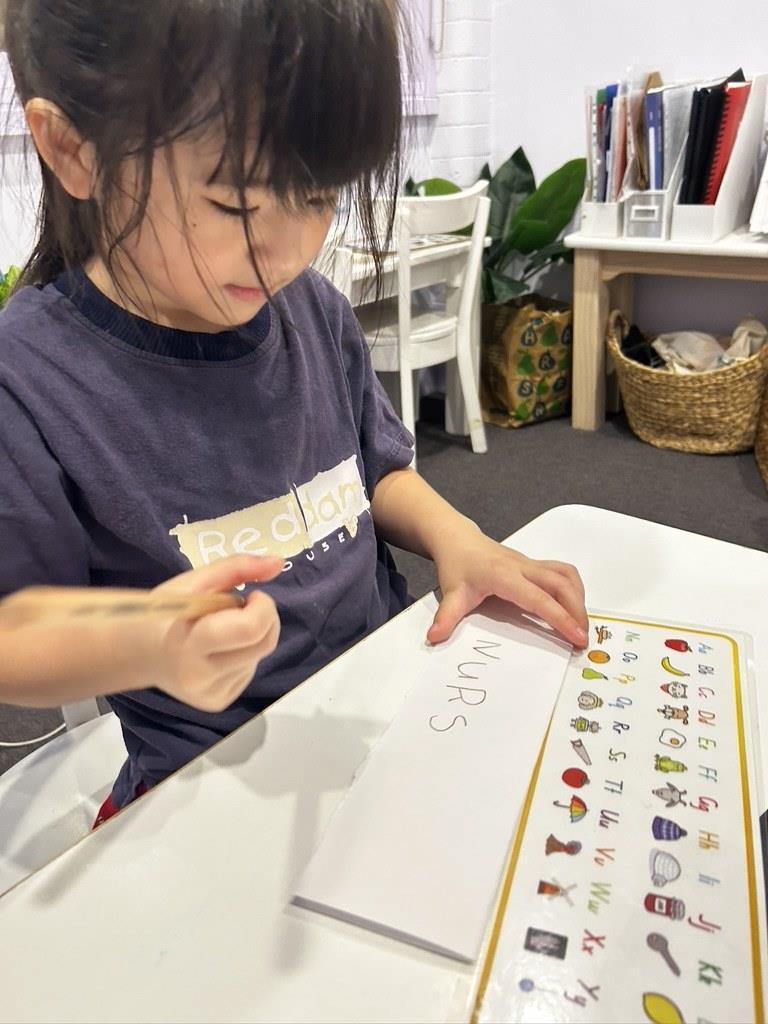







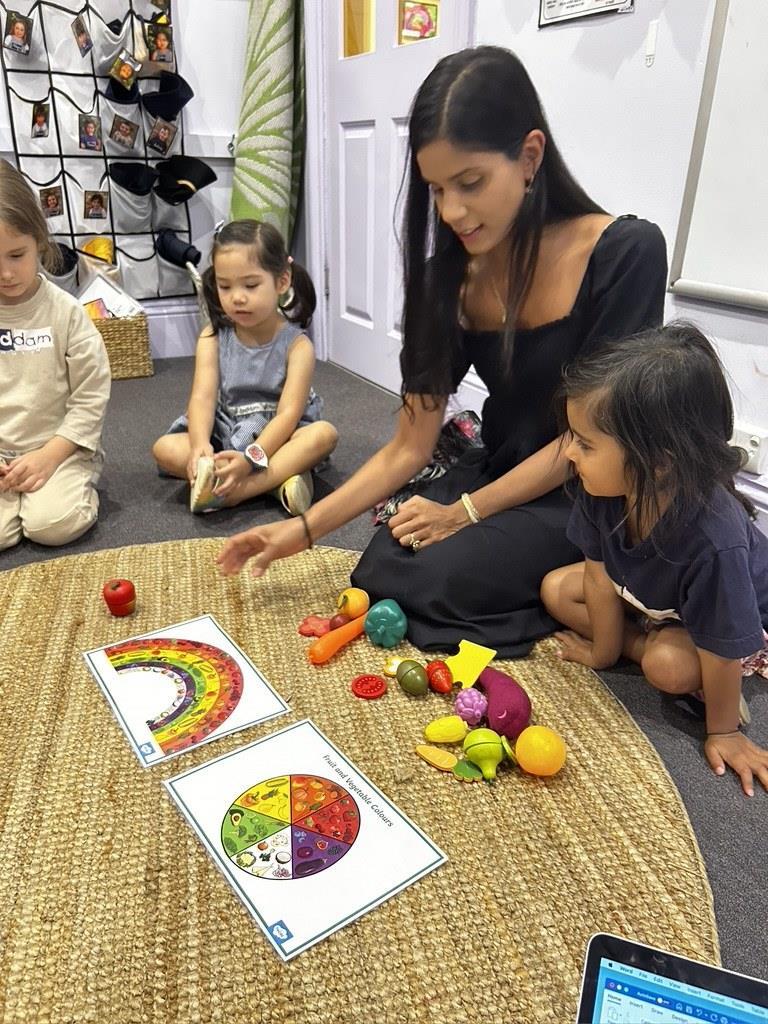








In Stages 3 and 4 Music this week we settled into class with “Wake Up Body”. We warmed up our voices by singing through our scales on vowel sounds of 'Ah', 'Ee' and 'Oo' to help strengthen our articulators and shapes.

We set out on our adventure as we sang and acted out "Going On A Bear Hunt". With our maracas, we did our best to shake in time while our lead explorers led the class through the song. We went through the grass; swam the river; hiked the desert and crawled all the way to the bear’s cave.
Using our castanets and animal rhythms, we started clicking out simple ‘CAT’ , ‘DOG’ and ‘SPIDER’. I built a variety of simple rhythms for the class to click out with both our right and left hands in order to strengthen our fine motor movement. We clicked out the rhythm to "Who's That" before playing the listening game, which helps us develop our audible perception. Everyone clicked and sang along the first two lines, and then a few children took it in turns to guess who was singing the last two. In Stage 4, I challenged the children by having two friends sing at once.
To end the lesson we used our castanets and maracas to shake, march and sing to "Ants Go Marching", slowly increasing the tempo each time; it's tricky to shake, click and stomp at the same time!
In Stages 1 and 2, we opened with "Wake Up Body" and our scales and counting on 'Ma'. With our maracas in hand, we sang through our sing-a-longs "ABC" and "Wheels on the Bus", using our maraca as our pretend steering wheel.
We went out into the garden for "The Sunflower Song" as we danced and sang along. We put our maracas away and visited "Old MacDonald's Farm", seeing what animals were there. I asked the children to act out each animal, how they would move and what sounds they make. We had monkeys, ducks, tigers and a kangaroo on this farm – an odd farm indeed!
With our castanets we clicked to our simple rhythm animals of ‘DOG’ , ‘CAT’ and ‘SPIDER’ in both hands, as well as trying to see how fast we could click to really get our fine motor movement going. To end the lesson we had some free play on our triangles, using our beaters to hit our triangles in time with “Bingo” .
Down in The Nest we opened the lesson with “Wake Up Body”, focusing on major parts like our hands, legs and head. Using our maracas, we sang through our sing-a-longs of “ABCs” and “Wheels on the Bus” . This week we had a request for “Baby Shark”, so we did our best actions to follow along!
Using our bells, we bobbed and sang through “Old MacDonald” as we tried to make the noises of the various animals we saw. Keeping with our animals, we got everyone up and moving for going to the zoo, introducing them to various movements our animals might make – swinging trunks, jumping monkeys, tall giraffes and jumping rhinos.
To help get our fingers moving, we sang “Twinkle Twinkle”, while trying to move each of our fingers like the stars, and we stretched our arms into the sky for our diamonds. To end the lesson, we had some free play with our triangles, doing our best to hit them with our beaters.
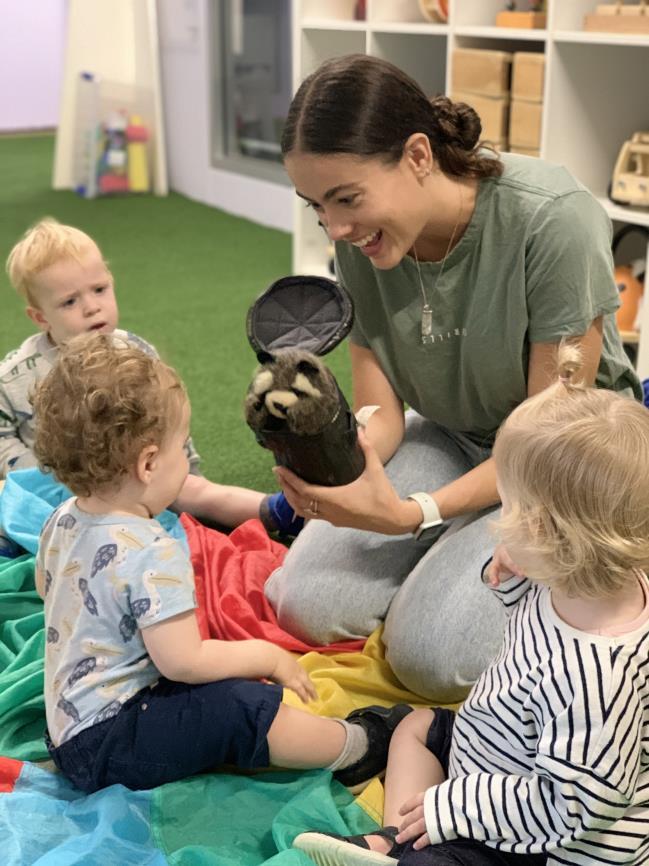

This week in Physical Education Stage 3 and 4 we unfortunately had a Wet Weather wash-out of our facilities, so we stayed in the classrooms.
To ensure the classes still remained at their active best, we decided still to have our usual fun lesson. We watched and participated in a fun arrangement of exercises from our resident expert Mr. Joe Wicks a.k.a “The Fitness Coach”. The classes performed a variety of body movements to a set time with a rest period in between each exercise.
We then moved on to Just Dance where some of the boys and girls showed off their movement skills to some classic songs.
Finally, to bring back down our heart rates we participated in some Cosmic Yoga, allowing the children to focus on relaxation and breathing techniques.
Hopefully the rain stays away next week for our final sports lesson of the term.





